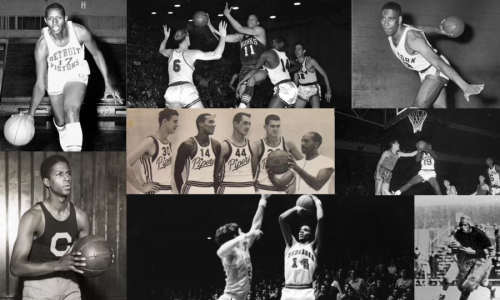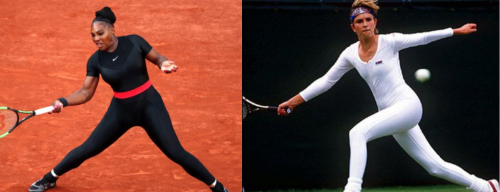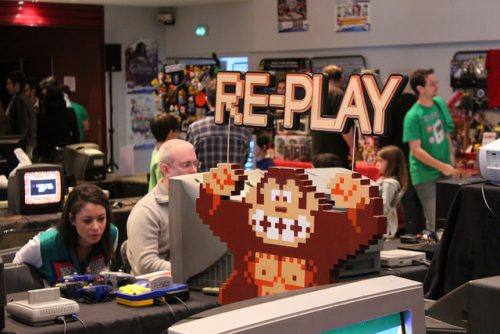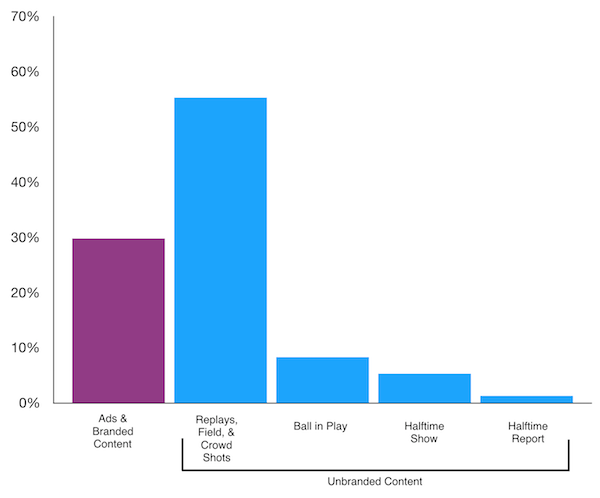Picture this. Walking down 135th street in Harlem, you spot a park in the distance. As you walk closer, you hear a basketball bouncing and kids yelling. It’s a small, outdoor court, well-maintained with fresh paint and a sturdy chain-link fence surrounding it. The ball is constantly in motion, being passed, dribbled, and shot from all angles. As the game progresses, the excitement draws in more kids around the court.
New York City is synonymous with basketball. From Harlem to Brooklyn, basketball has been a part of the city’s culture for decades. But why has basketball become such a staple of African American culture in cities? The answer is complex, but the roots of its popularity among minority groups stem from discriminatory practices like redlining and segregation.
A White Man’s Sport
“Basketball was originally invented as a white man’s game”
– Micheal Novack, The Joy of Sports (1946)
Basketball was founded in 1891 by Dr. James Naismith, a Canadian physical education instructor seeking a way to keep his students active. By the early 1900s, it was being played in colleges and high schools across the nation. Colleges like Harvard, Yale, Cornell and Princeton began to play games against each other as early as 1901. The first professional basketball league, the National Basketball League (NBL), was founded in 1937. It was later merged with the Basketball Association of America (BAA) to form the National Basketball Association (NBA) in 1949.

For the first 30 years, the majority of participants at the collegiate and professional level were white, as black participants were barred from playing. The first black collegiate player, George Gregory Jr, did not appear until 1928. In the 1949-1950 season Chuck Cooper, Nathaniel Clifton, and Earl Lloyd became the first black players to play professional basketball, breaking the color barrier. Basketball at this time was played mostly at community centers like YMCAs, where white owners refused membership to black people. If black people wanted to play basketball, they would need to build their own.
NYC’s History Of Racial, Economic, and Athletic Segregation
Redlining and other forms of economic discrimination depressed resources in minority neighborhoods. Redlining is an exclusionary practice that began in 1934 with the implementation of the National Housing Act (NHA). The NHA created government programs such as the Federal Housing Association (FHA) and the HomeOwner Loan Corporation (HOLC) with the intent to improve the housing market. It intended to promote homeownership by providing mortgage insurance to lenders, which would make it easier for people to obtain loans to buy homes. While the FHA improved housing conditions for White people, this support largely excluded black people.
The HOLC wrote dozens of reports to banks which categorized areas with large populations of black residents as “risky” for investors, driving down their property values and scaring off many potential investors. The FHA then used these maps to guide its lending policies, which meant refusing federally insured housing loans for minorities. In addition to this, as more black people began moving to white neighborhoods in northern cities in efforts to escape Jim Crow segregation, white people began to create suburbs outside the city to escape the influx of black people. As more white homeowners fled to the suburbs, the remaining ones agreed to sell their homes at deeper discounts, fearful of falling prices.
Economic inequality caused by redlining practices also created disparities in the types of sports played by the kids in poorer neighborhoods. Redlined neighborhoods have less green space and have smaller parks on average. According to an analysis by the Trust for Public Land, the average park size is 6.4 acres in poor neighborhoods, compared with 14 acres in wealthy neighborhoods in New York City.
In addition to available parks, minority children gravitated toward basketball because of the cost of entry barriers that other sports carried. In order to play baseball at a high level, you need money to pay for equipment and travel teams. Basketball did not carry this prerequisite. David C Ogden, a professor at the University of Nebraska who studied race and sport dynamics, wrote that the most common reasons for the lack of racial diversity were the paucity of baseball facilities in Black neighborhoods, and the cost of playing select baseball. As a result:
“More than two-thirds of the 27 coaches said that African-American youth prefer to spend their time on the basketball court rather than on the diamond”
Ogden (2003)
Rise of Black YMCAs
Basketball’s popularity among minority communities flourished because of the development of black YMCA’s. The Smart Set Athletic Club of Brooklyn would be the first fully independent Black basketball team in America in 1907. As more and more YMCA’s appeared in major cities, basketball spread in similar fashion.
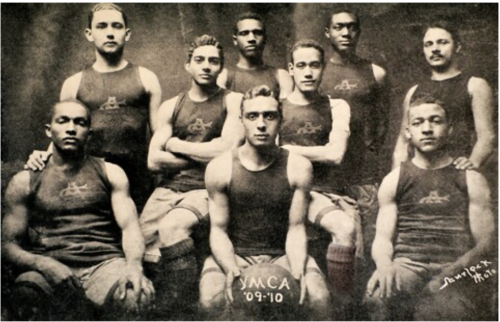
Edwin Bancroft Henderson, an educator working in Washington D.C., introduced the game of basketball to the Black community. Henderson learned the game during summer sessions at Harvard University, and then introduced the game to young Black men in the Wash. D.C. area. Soon the game would be played across the east coast of the United States, mainly in New York, Philadelphia and Baltimore.
Basketball also became a means for economic upward mobility. The Harlem Globetrotters formed in 1926 and became the most renowned basketball team for black basketball players. For black basketball players, the globetrotters provided the best and only way to make a living while playing basketball.
Basketball Today
Now, basketball is an important part of NYC culture, regardless of race. Black participation in basketball has soared in the decades after segregation, and has especially soared in NYC. Every summer, minority communities gather for basketball tournaments held in NYC parks, some that even draw national attention. Nike sponsored “NY vs NY” and Slam magazine’s Summer Classic feature the top ranked high school players and have thousands of fans watching every summer. They both have been held in Dyckman park in Manhattan for the past 5 years.
Significant changes have occurred in professional demographics as well. In contrast to 1950, 75 % of the NBA is black, with a bunch of black athletes playing abroad in leagues all over the world. Segregation and redlining stifled black participation in basketball in its early history, but the economic conditions it fostered helped basketball become an enduring staple of the community for generations.
Sharif Nelson ‘26 is a student at Hamilton College studying economics.
Additional Resources:
Aaronson, D., Faber, J., Hartley, D., Mazumder, B., & Sharkey, P. (2020). The Long-Run Effects of the 1930s HOLC “Redlining” Maps on Place-Based Measures of Economic Opportunity and Socioeconomic Success. The Effects of the 1930s HOLC “Redlining” Maps. https://doi.org/10.21033/wp-2020-33
Bowen, F. (2023, April 7). In its early years, NBA blocked black players. The Washington Post. Retrieved April 24, 2023, from https://www.washingtonpost.com/lifestyle/kidspost/in-nbas-early-years-black-players-werent-welcome/2017/02/15/664aa92e-f1fc-11e6-b9c9-e83fce42fb61_story.html
Centopani, P. (2020, February 24). The makings of basketball mecca: Why it will always be New York. FanSided. Retrieved May 1, 2023, from https://fansided.com/2020/02/24/makings-basketball-mecca-will-always-new-york/
Domke, M. (2011). Into the vertical: Basketball, urbanization, and African American … Into the Vertical: Basketball, Urbanization, and African American Culture in Early- Twentieth-Century America. Retrieved March 31, 2023, from http://www.aspeers.com/sites/default/files/pdf/domke.pdf
Gay, C. (2022, January 13). The black fives: A history of the era that led to the NBA’s racial integration. Sporting News Canada. Retrieved April 24, 2023, from https://www.sportingnews.com/ca/nba/news/the-black-fives-a-history-of-the-era-that-led-to-the-nbas-racial-integration/8fennuvt00hl1odmregcrbbtj
Gorey, J. (2022, July 25). How “White flight” segregated American cities and Suburbs. Apartment Therapy. Retrieved April 30, 2023, from https://www.apartmenttherapy.com/white-flight-2-36805862
Hunt, M. (2022, October 11). What is the National Housing Act? Bankrate. Retrieved April 25, 2023, from https://www.bankrate.com/real-estate/the-national-housing-act/#:~:text=What%20is%20the%20National%20Housing%20Act%20(NHA)%3F,Loan%20Insurance%20Corporation%20(FSLIC).
Hu, W., & Schweber, N. (2020, July 15). New York City has 2,300 parks. but poor neighborhoods lose out. The New York Times. Retrieved April 21, 2023, from https://www.nytimes.com/2020/07/15/nyregion/nyc-parks-access-governors-island.html
Ivy league regular season champions, by Year. Coaches Database. (2023, March 5). Retrieved April 24, 2023, from https://www.coachesdatabase.com/ivy-league-regular-season-champions/
McIntosh, K., Moss, E., Nunn, R., & Shambaugh, J. (2022, March 9). Examining the black-white wealth gap. Brookings. Retrieved April 25, 2023, from https://www.brookings.edu/blog/up-front/2020/02/27/examining-the-black-white-wealth-gap/
Ogden, D. C. ., & Hilt, M. L. . (2003). Collective Identity and Basketball: An Explanation for the Decreasing Number of African Americans on America’s Baseball Diamond. Retrieved March 31, 2023, from https://www.nrpa.org/globalassets/journals/jlr/2003/volume-35/jlr-volume-35-number-2-pp-213-227.pdf
Ortigas, R., Okorom-Achuonyne, B., & Jackson, S. (n.d.). What exactly is redlining? Inequality in NYC. Retrieved March 30, 2023, from https://rayortigas.github.io/cs171-inequality-in-nyc/
Pearson, S. (2022). Basketball origins, growth and history of the game. History of The Game Of Basketball Including The NBA and the NCAA. Retrieved April 24, 2023, from https://www.thepeoplehistory.com/basketballhistory.html
Robertson, N. M. (1995). [Review of Light in the Darkness: African Americans and the YMCA, 1852-1946., by N. Mjagkij]. Contemporary Sociology, 24(2), 192–193. https://doi.org/10.2307/2076853
Townsley, J., Nowlin, M., & Andres, U. M. (2022, August 18). The lasting impacts of segregation and redlining. SAVI. Retrieved March 30, 2023, from https://www.savi.org/2021/06/24/lasting-impacts-of-segregation/

